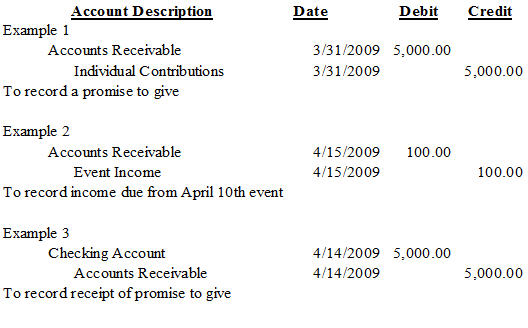
Rent receivables represent a significant portion of revenue, and their proper handling can influence both short-term liquidity and long-term profitability. Rent received in advance is the amount of rent received before it was actually due, however, the related benefits equivalent to the advance received are yet to be provided to the tenant. The use of software tools like QuickBooks or Xero can streamline this process by automating calculations and ensuring consistency. These platforms often include features that allow for the input of lease terms and automatically compute the present value of rent receivables. This not only saves time but also reduces the risk of human error, providing a more accurate financial picture.
Accounting and Journal Entry for Rent Paid
Realizable indicates that you expect to receive a cash payment in the future for the income you earn. ASC 842 lease accounting guidance explicitly states that following the commencement of an operating lease, the ROU asset will be adjusted for several items, including any prepaid or accrued lease payments. Deferred rent, depending on whether it is a cumulative positive or negative amount, is either accrued rent or prepaid rent. Looking to the amortization table at the beginning of this example, it is apparent deferred rent is not being separately calculated and identified as it was under ASC 840. ASC 842 requires the recognition of total rent expense on a straight-line basis over the lease term for leases classified as operating.

Accounting Treatment for Rent Payment
Conversely, in a finance lease, the lessor recognizes a net investment in the lease, which includes the present value of future lease payments. This distinction is crucial as it affects how rent receivable is reported and managed. The combined lease expense is now reported in the operating section of the income statement under ASC 842 in place of rent expense. Under ASC 840, accounting for rent in operating leases was straightforward. Lessees would simply record a debit to rent expense and a credit to cash, reflecting the expense for using the leased asset and the payment made within the same period. If a business owns a property that is not being used then it may decide to rent it out and collect periodical payments as rent.
Accounting for accrued rent with journal entries
- For any lease commencing after transition to ASC 842, deferred rent is not recognized.
- Accountants needs to capture every financial transaction precisely in the books of accounts.
- Both accounts are identical and report the same balances; the only difference is the name.
- When cash payments in a period were greater than the expense recognized, prepaid rent would be capitalized on the balance sheet with a debit balance.
For instance, percentage rent, which is based on a tenant’s sales, requires regular adjustments to reflect actual sales figures. This necessitates a dynamic approach to accounting, where rent receivable is periodically updated to mirror the tenant’s performance. Advanced accounting software can facilitate this by integrating sales data and adjusting receivables accordingly. Understanding how to account for rent receivable involves recognizing key components, applying appropriate measurement techniques, and addressing potential impairments.
Under these frameworks, both lessors and lessees must account for leases on their balance sheets, which includes recognizing rent receivable as an asset. In addition to present value calculations and variable components, it’s important to account for potential credit losses. Estimating the likelihood of tenants defaulting on their rent payments involves analyzing historical data, current economic conditions, and tenant-specific factors.
Automated reminders through property management software like Buildium or Rentec Direct can prompt tenants to pay on time, reducing the incidence of late payments. Additionally, offering multiple payment options, including online portals and direct debits, can streamline the collection process and improve cash flow consistency. Advanced journal entries for rent receivable require a deep understanding of both the lease terms and the applicable accounting standards. These entries are not merely about recording rent income but also involve recognizing various adjustments and ensuring compliance with financial reporting requirements.
The additional rent expense is “delayed” or deferred to be recognized at a later date. In this example, we will assume the lease agreement has met the criteria for an operating lease. Using the stated facts the present value of the lease payments at lease commencement is $970,874 and the ROU asset is calculated to be $980,874, the lease liability plus the $10,000 of IDC. Prepaid Rent is the amount of rent paid by a firm in advance but the related benefits equivalent to the amount of advance payment are yet to be received. Another important ratio influenced by rent receivables is the days sales outstanding (DSO).
The liability increases each period the expense is incurred and no payment is made. The entry the lessee makes at the beginning of the lease agreement under ASC 842 is to record the initial ROU asset and lease liability. Along with recognizing the asset and liability, the lessee also pays $10,000 of IDC which is recorded as an increase to the ROU asset. Example – On 1st January ABC Co. paid office rent amounting to 10,000 (5,000 x 2) for the month of January & February. A retailer enters into a 10-year warehouse lease with initial rent payments of $120,000 a month and a 2% annual rent escalation.
Another strategy to enhance cash flow is the implementation of late fees and early payment discounts. Late fees serve as a deterrent against delayed payments, while early payment discounts incentivize tenants to pay before the due date. Both approaches can accelerate cash inflows, providing a more stable financial footing. Rent receivables, essentially the amounts due from tenants for the use of property, form a fundamental part of a landlord’s or property manager’s financial landscape. These receivables are recorded as assets on the balance sheet, reflecting the expectation of future cash inflows.
This is done to keep legal evidence of the accounting transaction and maintain an audit trail. As Cash and Income GL accounts have a Debit and Credit balance, rent receivable journal entry we must debit the Cash and credit the deposit account in a journal entry. He is looking for a well-established property in a prime location in the city.

